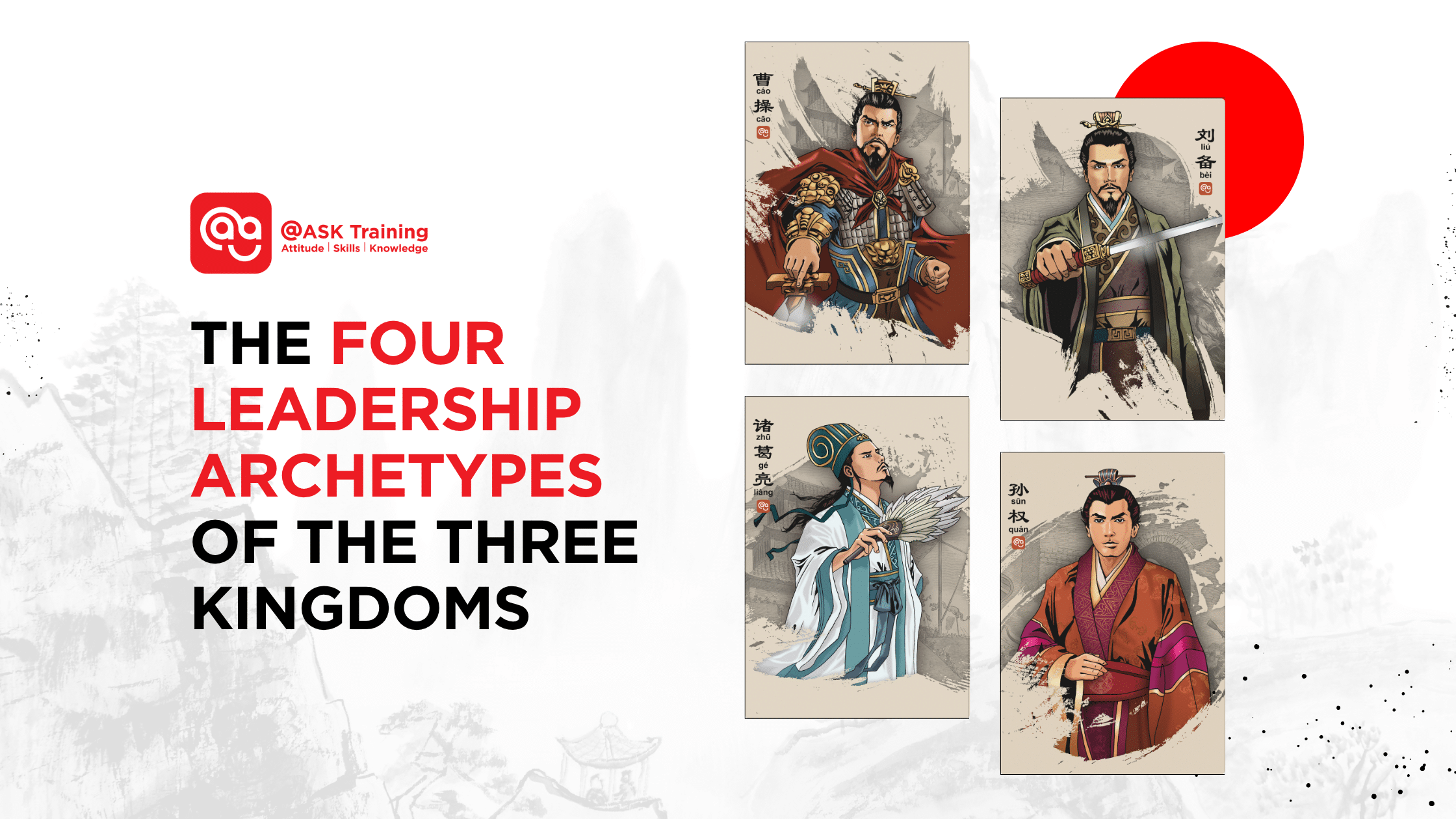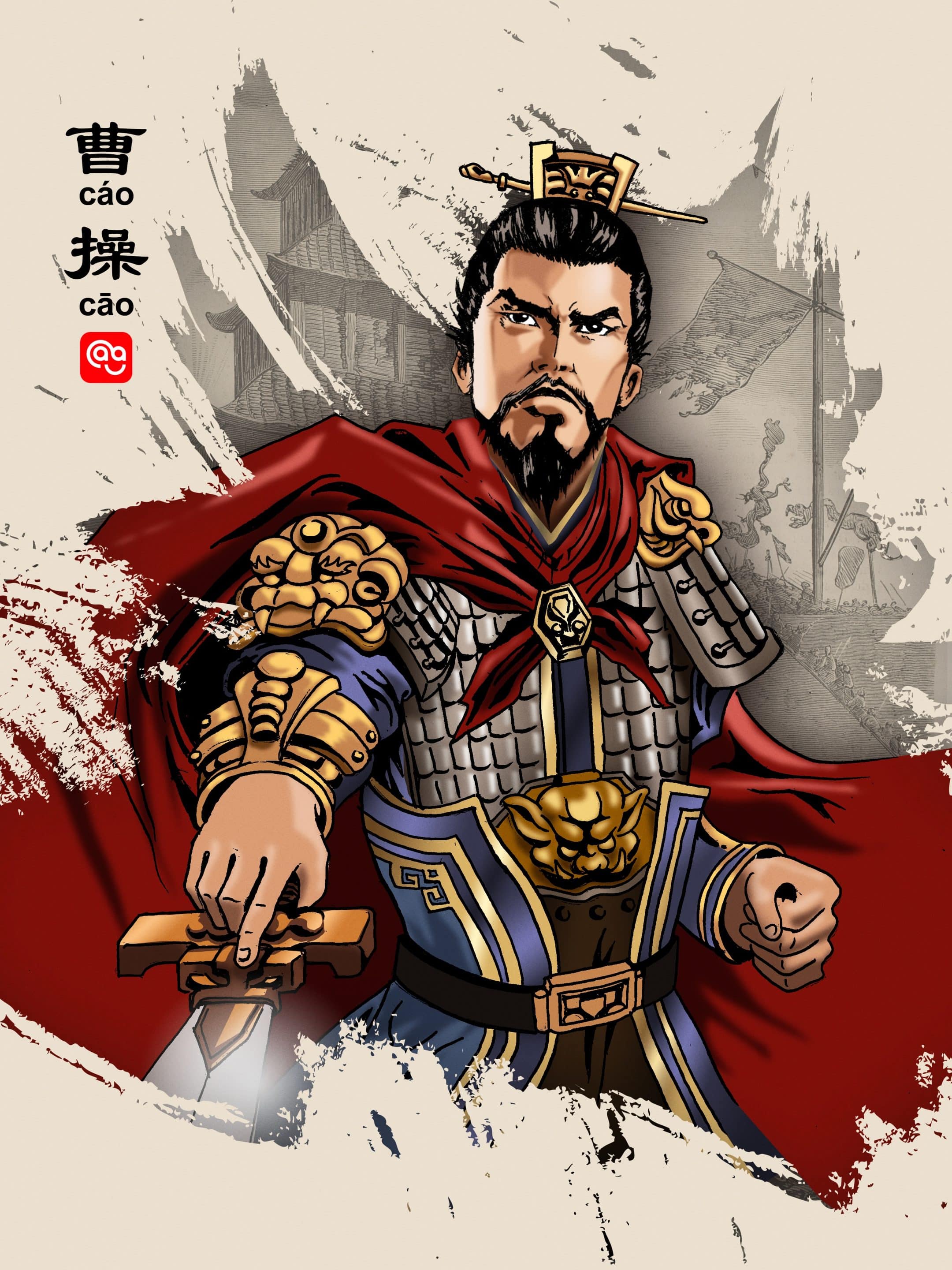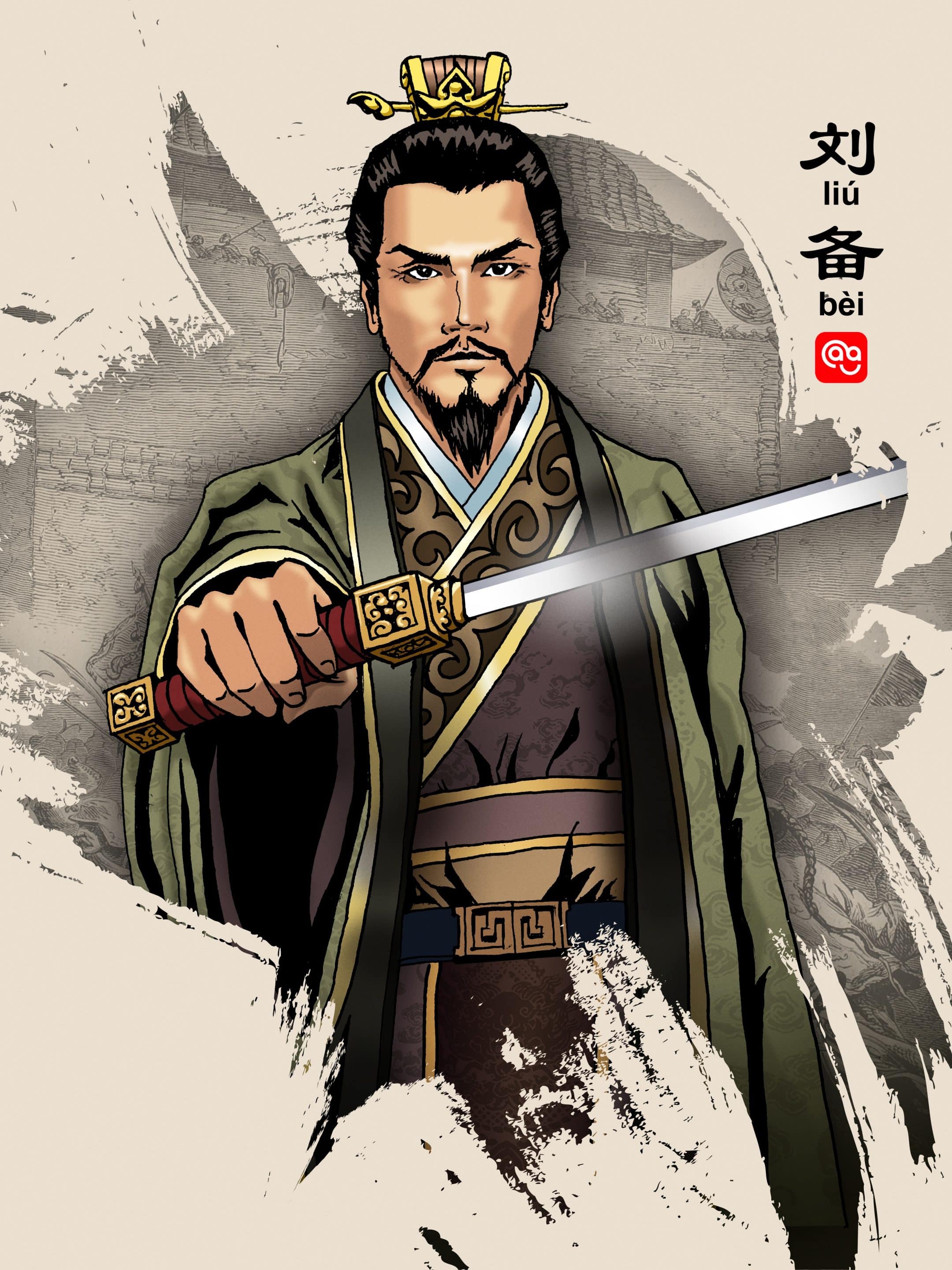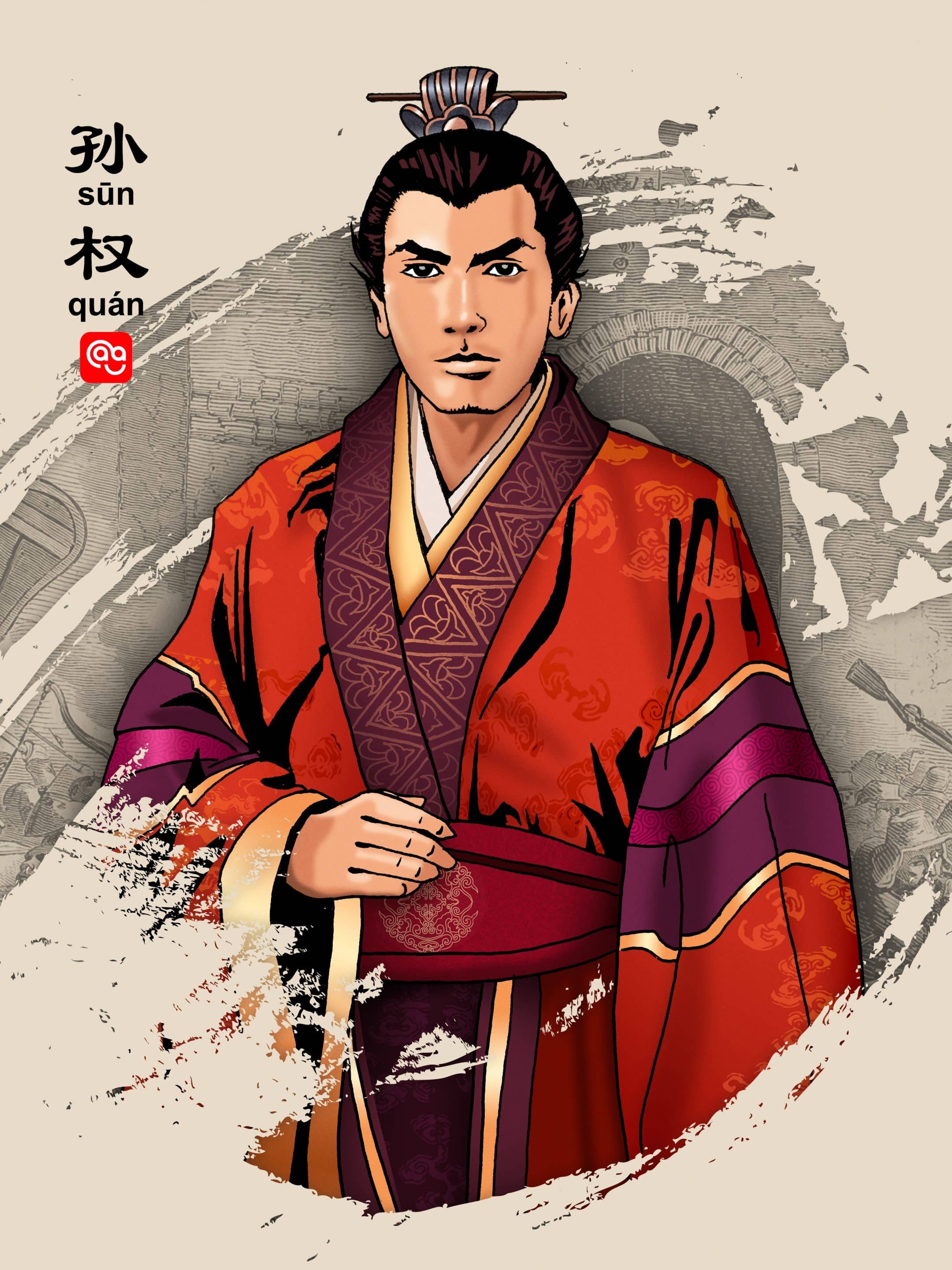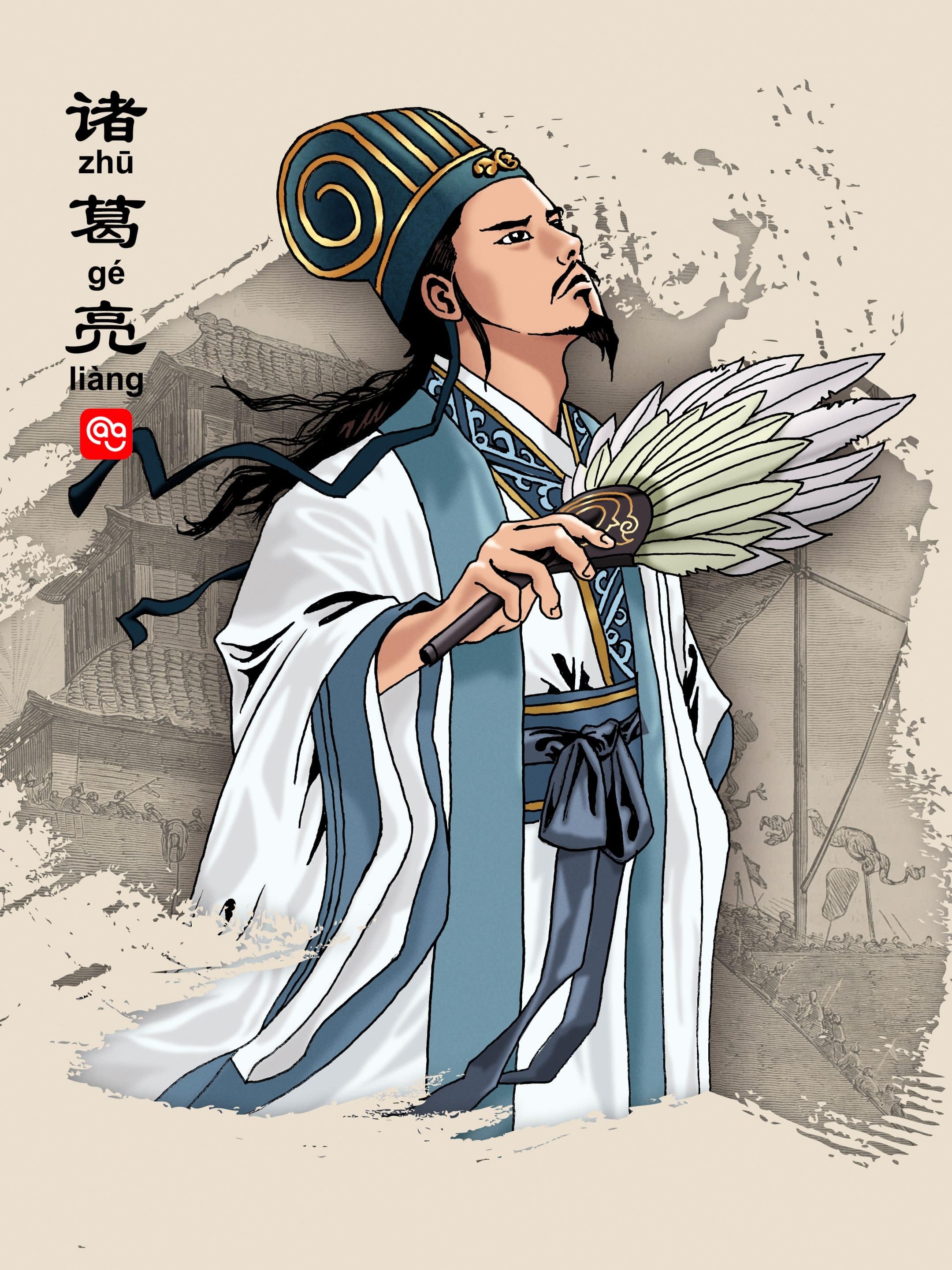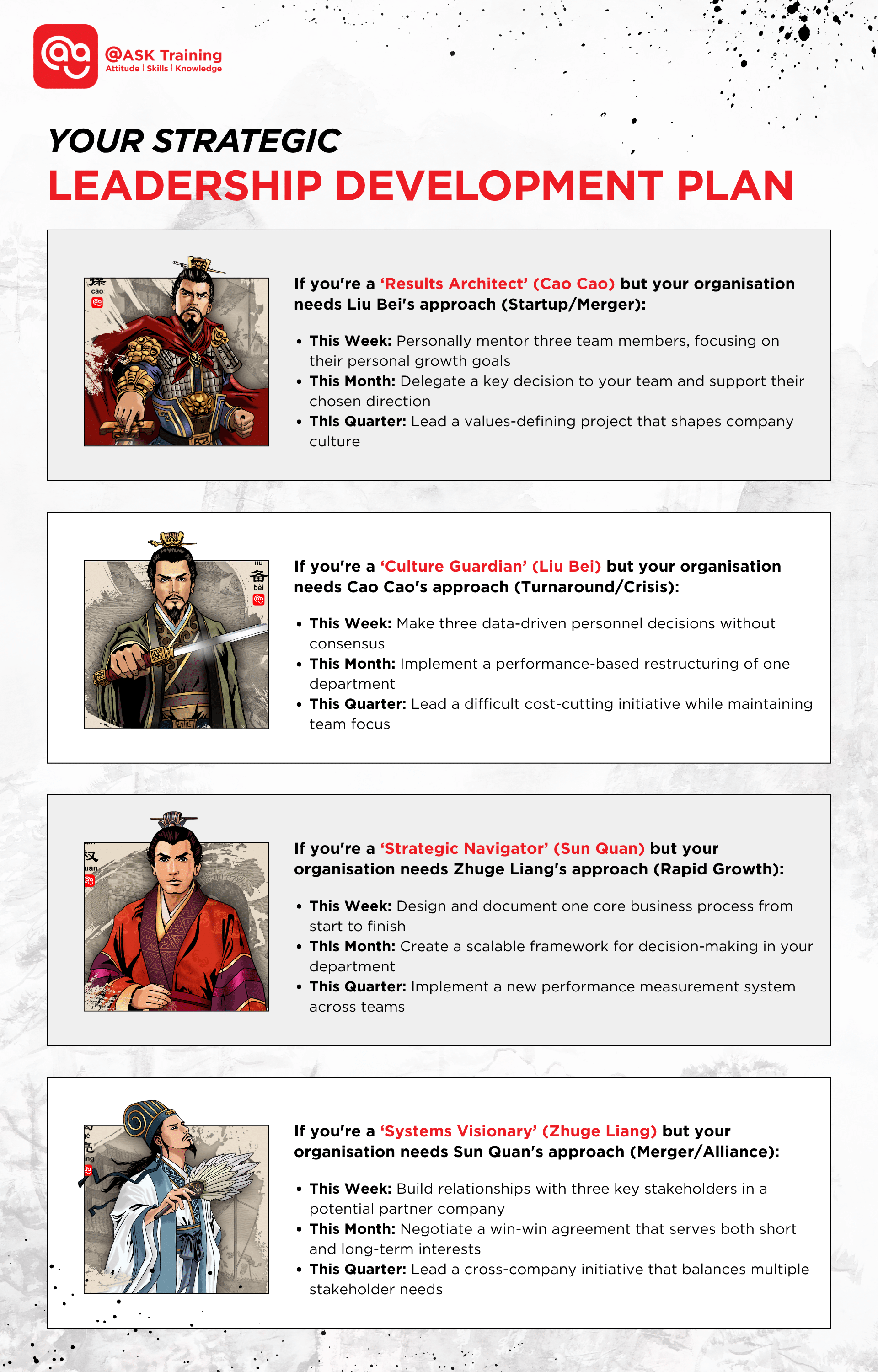Every leader carries an inner blueprint, a natural style that shapes how they command, inspire, and overcome challenges.
1,800 years ago, four distinct leadership blueprints emerged during China’s Three Kingdoms period, each so effective that it built a lasting legacy.
As we explore the first domain of our Eight Trigrams Framework, The Leader/Ruler, we invite you to discover which of these timeless leadership archetypes lives within you, and how to wield it effectively in today’s complex business landscape.
Now, let’s meet the four legendary leaders whose strategies continue to shape modern leadership thinking.
The Four Leadership Archetypes: More Than Historical Figures
The true test of leadership isn’t found in following one perfect style, but in understanding multiple approaches and knowing when to deploy each.
The Three Kingdoms period offers us four distinct leadership archetypes that remain remarkably relevant for today’s organisational challenges.
1. Cao Cao: The Pragmatic Architect
Cao Cao emerged as one of the most formidable warlords during the late Eastern Han dynasty, ultimately laying the foundation for the Wei kingdom.
Known for his strategic brilliance and administrative reforms, he controlled China’s heartland through a combination of military might and political cunning.
Historical Context
Cao Cao rose to power during the chaotic end of the Han Dynasty, controlling the northern heartland – the most populous and prosperous region.
He built his power base on military brilliance and administrative efficiency, often employing controversial tactics to achieve his goals.
Leadership Style
- Results-driven and meritocratic
- Decisive and willing to make unpopular choices
- Focused on systems and processes over personal relationships
- Practical rather than ideological
Modern Parallel:
The turnaround CEO or private equity executive who transforms struggling organisations through data-driven decisions and operational efficiency.
Like the leader who restructures underperforming departments based on KPIs rather than seniority.
Best For:
- Corporate turnarounds and restructuring
- Highly competitive markets require aggressive strategies
- Situations demanding quick, decisive action
- Organisations needing performance-based cultures
Potential Pitfall
Can create a high-pressure environment that leads to burnout and may struggle with talent retention due to a perceived lack of empathy.
2. Liu Bei: The Virtuous Leader
Liu Bei, a distant relative of the Han imperial family, began his journey as a humble merchant before becoming the founding emperor of Shu Han.
His rise to power was characterised by his commitment to Confucian values and his ability to inspire loyalty.
Historical Context
Liu Bei started as a sandal-maker with royal lineage but no power. He built his kingdom through relationship-building and moral authority, famously recruiting Zhuge Liang through persistent courtship.
Leadership Style
- Values-based and principle-driven
- Focused on building loyal teams through genuine care
- Leads by example and inspiration
- Prioritises long-term relationships over short-term gains
Modern Parallel
The mission-driven founder who builds a cult-like company culture, or the manager whose team would follow them to any organisation. Like the leader who prioritises employee well-being and development.
Best For:
- Building long-term organisational culture
- Creative industries and innovation-driven companies
- Startups needing to attract talent without large budgets
- Situations requiring trust and loyalty
Potential Pitfall
May avoid necessary conflicts or tough decisions to preserve harmony, potentially slowing down crucial organisational changes.
3. Sun Quan: The Diplomatic Steward
Sun Quan inherited control of the Jiangdong region from his brother Sun Ce and skilfully maintained Wu’s sovereignty against larger rivals. His long reign saw Wu become an economic and military power through careful diplomacy.
Historical Context:
Sun Quan inherited control of the Wu kingdom at age 18 and maintained it through strategic alliances and careful resource management. He excelled at playing larger powers against each other.
Leadership Style:
- Pragmatic and risk-aware
- Master of strategic positioning and timing
- Excellent at building and maintaining alliances
- Focused on stability and gradual growth
Modern Parallel:
The family business successor or corporate diplomat who excels at joint ventures and stakeholder management. Like the executive who navigates complex regulatory environments through relationships.
Best For:
- Merger and acquisition environments
- Regulated industries require careful navigation
- Maintaining stability during market uncertainty
- Organisations operating in complex ecosystems
Potential Pitfall
Can become overly cautious, missing opportunities that require bold action, and may struggle with innovation due to risk aversion.
4. Zhuge Liang: The Systems Strategist
Zhuge Liang served as Liu Bei’s chief strategist and later as regent for his son. Revered as one of China’s greatest military tacticians, he was equally accomplished as an inventor, administrator, and diplomat.
Historical Context
Zhuge Liang served as chief strategist for Liu Bei, designing military campaigns and administrative systems that transformed a small force into a kingdom.
Leadership Style
- Analytical and methodical
- Excellent at pattern recognition and long-term planning
- Creates comprehensive systems and contingency plans
- Focuses on sustainable, scalable solutions
Modern Parallel
The COO or chief strategist who builds operational excellence, or the consultant who designs business transformations. Like the leader who creates frameworks that outlast their tenure.
Best For
- Complex organisational challenges
- Technology implementation and digital transformation
- Building sustainable, scalable operations
- Situations requiring sophisticated planning
Potential Pitfall
Can over-engineer solutions when simpler approaches would work, and may struggle with rapid execution due to perfectionism.
Understanding these four distinct styles is crucial, but their real power is revealed not when they are viewed in isolation, but as parts of an integrated, dynamic system; a perspective often missing from conventional leadership models.
A Missing Piece in Modern Leadership
The Three Kingdoms as a Systems-Based Paradigm
Much of modern Western leadership theory focuses on the individual leader, their charisma, their vision, and their transformational qualities. The Three Kingdoms offers a different, and often complementary, perspective: leadership as a dynamic, contextual system.
This Asian strategic tradition is less about a single heroic figure and more about understanding the ecosystem of power, relationships, and timing.
It provides a crucial toolkit for the complex, interconnected global business environment, particularly resonating with collectivist cultures prevalent in Asia and the Global South.
| Dimension | Common Western Frameworks | Three Kingdoms / Asian Strategic Paradigm |
| Core Unit | The Individual Leader | The Collective System (Leader, Team, Advisors, Alliances) |
| Success Metric | Quarterly Results, Shareholder Value | Long-term Legacy & Organisational Stability |
| Decision Driver | Data, Speed, Innovation | Context Intelligence (Timing, Relationships, Balance of Power) |
| Talent Strategy | Hire the “best athlete”; promote based on performance | Meritocracy within Loyalty (Cao Cao) & Nurture Potential (Liu Bei) |
| View of Alliances | Transactional Partnerships; Mergers & Acquisitions | Strategic Interdependence (Sun Quan); relationships as long-term assets |
Why This Matters Now:
This isn’t about one being “better.” It’s about completing the picture. The Western model excels in driving efficiency and innovation. The Three Kingdoms model provides deep wisdom on:
- Navigating complex stakeholder environments (common in Asian markets and large corporations).
- Building resilient organisations that endure beyond market cycles.
- Leading in contexts where relationships and cultural nuance are as important as data.
Key Takeaway: The most effective modern leaders will be those who can fluidly operate within both paradigms.
This systems-view of leadership leads to one critical skill for modern leaders today.
The Art of Contextual Leadership
If leadership is about navigating a dynamic system rather than just exercising personal will, then your most critical skill becomes what we call Context Intelligence: the ability to read the situation and adapt your approach accordingly.
The Three Kingdoms masters demonstrated that true leadership isn’t about perfecting one style, but about knowing when to pivot between them.
Consider how these legendary figures adapted:
The Strategic Pivot in Action
- Cao Cao’s Pragmatic Mercy: While known for ruthless efficiency, he showed remarkable leniency to win back talented defectors
- Liu Bei’s Virtuous Strategy: He balanced his reputation for virtue with shrewd political alliances when survival demanded it
- Sun Quan’s Diplomatic Boldness: The master of stability knew when to take unexpected military action to protect his interests
- Zhuge Liang’s Systematic Creativity: He combined meticulous planning with unexpected, unconventional solutions
Modern Application
Today’s most effective leaders apply this same contextual intelligence:
- The values-driven CEO who makes pragmatic cuts during a market downturn
- The systems-oriented executive who employs diplomatic skills during a merger
- The growth-focused founder who shifts from rapid expansion to cultural preservation
The key is maintaining your core values while consciously choosing which leadership approach serves the moment.
This flexibility, not rigid adherence to any single style, is what separates good leaders from truly great ones.
This contextual awareness sets the stage for putting theory into practice. Let’s examine how these principles play out in today’s business world.
Modern Case Studies: Ancient Patterns in Today’s Business World
The true test of any leadership framework is how it plays out in real-world business scenarios.
Here, we examine how the strategic patterns of the Three Kingdoms continue to manifest across different organisational contexts.
SME Case Study: Strategic Agility of Singaporean SMEs
(Image Source: EDB SG)
This case study synthesises findings from the Singapore Business Federation’s (SBF) 2024 National Business Survey with observed patterns of successful SME leadership.
The data reveals that top-performing SMEs consistently demonstrate multi-faceted strategic approaches when facing today’s key challenges.
The Situation
Based on SBF survey data showing Singaporean SMEs face:
- Rising business costs (80.6% of respondents)
- Geopolitical/economic uncertainty (44.7%)
- Manpower shortages (44.1%)
The Observed Leadership Strategy
For example, successful SME leadership (multi-archetype approach):
- Sun Quan’s Diplomacy: 68% of expanding SMEs form regional alliances (Malaysia, Vietnam, Indonesia)
- Cao Cao’s Pragmatism: 72% implement cost automation while maintaining core operations
- Liu Bei’s Virtuous Leadership: 85% retention rates through upskilling and flexible arrangements
- Zhuge Liang’s Systems Thinking: 61% adoption of cloud management systems for scalability
The Contextual Intelligence
Data shows thriving SMEs don’t choose one strategy; they combine approaches based on specific challenges, demonstrating the contextual intelligence central to Three Kingdoms leadership.
The Documented Outcomes
Based on SBF performance metrics:
- 15-20% operational cost reduction through automation
- 25-40% revenue diversification within 18 months
- 85-92% key staff retention despite market challenges
- 3x faster scaling through digital infrastructure
Data Source: Singapore Business Federation – National Business Survey 2024 (Sample: 1,068 SMEs)
MNC Case Study: Microsoft’s US$1.7 Trillion Transformation
(Image Source: Microsoft Learn)
The Situation (2013)
- Missed the mobile revolution and was losing the cloud computing race
- Internal silos and “Windows-first” mentality stifled innovation
- Stock price had been stagnant for over a decade
- Declining relevance in the rapidly evolving tech landscape
The Three Kingdoms Leadership Strategy
Satya Nadella’s Multi-Archetype Approach:
- Liu Bei’s Virtuous Leadership:
- Introduced “growth mindset” culture, emphasising learning over know-it-all expertise
- Ended stack-ranking system that created destructive internal competition
- Fostered collaboration and empathy across previously divided teams
- Zhuge Liang’s Systems Strategy:
- Shifted from “Windows-first” to “cloud-first, mobile-first” strategic framework
- Built Azure cloud infrastructure as the new core system
- Created integrated ecosystem through strategic acquisitions (LinkedIn, GitHub)
- Sun Quan’s Diplomatic Alliances:
- Partnered with former rivals, including Apple and Linux
- Embraced open-source communities previously seen as threats
- Formed strategic cloud partnerships across multiple industries
- Cao Cao’s Pragmatic Execution:
- Made bold bets on Azure despite short-term revenue risks
- Acquired LinkedIn (US$26B) and GitHub (US$7B) to expand ecosystem
- Restructured organisation to break down legacy silos
The Contextual Intelligence
Nadella demonstrated masterful contextual leadership by recognising that Microsoft needed:
- Cultural healing (Liu Bei) to fix internal dysfunction
- Systematic reinvention (Zhuge Liang) to compete in new markets
- Strategic partnerships (Sun Quan) rather than pure competition
- Decisive action (Cao Cao) to transform the business model
The Documented Outcomes
- Market capitalisation grew from US$300B to over US$2 trillion
- Azure cloud revenue reached US$34+ billion annually
- Successful integration of major acquisitions (LinkedIn, GitHub)
- Transformed from an industry laggard to a cloud and AI leader
- Regained position as innovation powerhouse
Leadership Insight
Nadella’s success stems from his ability to fluidly move between leadership archetypes, healing culture while making tough business decisions, building systems while forming alliances, and maintaining Microsoft’s core identity while radically transforming its strategy.
Data Source: Microsoft Annual Report 2023, Digitally transforming Microsoft: Our IT journey
These case studies demonstrate a crucial pattern: the most successful leaders don’t rely on a single approach.
They diagnose what their specific situation demands and deploy the right combination of strategies, exactly as the Three Kingdoms masters did centuries ago.
Next, we’ll provide you with a practical framework to make these diagnoses in your own organisation.
The Strategic Leadership Matrix: Diagnosing Your Organisation’s Needs
The Strategic Leadership Matrix translates 1,800-year-old strategic wisdom into a practical diagnostic tool for modern organisations.
Based on the patterns observed in the Three Kingdoms period and validated by contemporary case studies, this matrix helps leaders identify which leadership approaches their current situation demands.
The Strategic Leadership Matrix
| Organisational Situation | Primary Archetype Needed | Supporting Archetype | Key Focus Areas |
| Startup & Early Growth | Liu Bei (Virtuous Leader) | Zhuge Liang (Systems Strategist) | · Building loyal teams
· Establishing core values · Creating foundational systems |
| Turnaround & Crisis | Cao Cao (Pragmatic Architect) | Sun Quan (Diplomatic Steward) | · Quick decisive action
· Stakeholder management · Cost optimisation |
| Rapid Scaling | Zhuge Liang (Systems Strategist) | Liu Bei (Virtuous Leader) | · Scalable processes
· Maintaining culture · Talent development |
| Market Uncertainty | Sun Quan (Diplomatic Steward) | Cao Cao (Pragmatic Architect) | · Strategic partnerships
· Risk management · Flexible positioning |
| Merger & Integration | Sun Quan (Diplomatic Steward) | Liu Bei (Virtuous Leader) | · Cultural harmony
· Relationship building · Value alignment |
How to Use This Matrix
- Diagnose Your Current Situation
- Assess which scenario best describes your organisation’s challenges
- Consider market conditions, internal capabilities, and strategic objectives
- Identify Leadership Priorities
- Primary archetype: Your main leadership focus
- Supporting archetype: Complementary approach for balance
- Apply to Team Development
- Build leadership teams with complementary strengths
- Develop individual leaders to expand their archetype range
Real-World Applications Examples
- Microsoft:
- Situation: Turnaround needed
- Primary: Cao Cao (Pragmatic restructuring)
- Supporting: Zhuge Liang (Systems transformation)
- Result: Successful business model shift
- Singapore SMEs:
- Situation: Market uncertainty + Scaling needs
- Primary: Sun Quan (Regional partnerships)
- Supporting: Zhuge Liang (Digital systems)
- Result: Sustainable regional expansion
Connecting to Case Studies
The matrix explains why different leadership approaches succeeded in our case studies:
- Microsoft needed pragmatic action first, then systems building
- SMEs required diplomacy for expansion while maintaining cultural values
Now that you understand how to diagnose organisational needs, let’s turn inward to discover your personal leadership style and how it aligns with these strategic requirements.
Interactive: The Three Kingdoms Leadership Legacy Assessment
Discover your dominant leadership archetype and unlock personalised insights to enhance your leadership impact.
This 5-minute assessment will reveal not just your primary style, but also your potential blind spots and growth opportunities.
Part 1: Leadership Scenarios
Scenario 1: The Resource Dilemma
Your department faces unexpected budget cuts of 30%. Key projects and team morale are at stake. Your approach is to:
A. Immediately identify the 20% of activities delivering 80% of results and protect them at all costs
B. Gather the team to collectively decide which sacrifices align with our core values and long-term vision
C. Negotiate with other departments for shared resources while maintaining our essential operations
D. Redesign our entire workflow system to achieve the same outcomes with 30% fewer resources
Scenario 2: The Market Opportunity
A competitor’s unexpected collapse creates a sudden market opening. The window for action is narrow. You:
A. Quickly reallocate resources to capture the most profitable segments immediately
B. Ensure this opportunity aligns with our company’s identity before committing resources
C. Form temporary alliances with complementary businesses to maximise our positioning
D. Analyse how this fits into the broader industry landscape and our 5-year strategic plan
Scenario 3: The Succession Challenge
Your most experienced manager announces an unexpected retirement. Their role is crucial for ongoing operations. You:
A. Promote the most quantitatively proven performer regardless of their experience level
B. Identify who best embodies our culture and can maintain team cohesion and values
C. Consider external candidates who bring fresh networks and partnership opportunities
D. Restructure the entire department to make the role less dependent on one person’s expertise
Part 2: Innovation and Risk Assessment
How do you approach uncharted territory in your industry?
A. Focus on practical applications with clear, measurable returns on investment
B. Explore innovations that enhance our brand identity and customer relationships
C. Wait for others to test the waters, then form strategic partnerships with early leaders
D. Map the complete innovation ecosystem and identify the most strategically valuable positions
When facing ambiguous situations with limited data, you:
A. Rely on key performance indicators and quick, measurable experiments
B. Consult trusted team members and stakeholders for their perspectives and instincts
C. Look for analogous situations and how other successful organisations navigated them
D. Create decision frameworks that account for multiple possible scenarios and outcomes
Part 3: Leadership Legacy Focus
What leadership impact matters most to you?
A. Building systems and processes that deliver consistent excellence beyond any individual
B. Creating a culture where people feel genuinely connected to each other and the mission
C. Positioning the organisation for long-term stability and strategic advantage
D. Achieving measurable results that demonstrate clear competitive superiority
Your approach to developing future leaders emphasises:
A. Creating clear performance metrics and advancement criteria based on results
B. Mentoring relationships and values-based leadership development
C. Exposure to diverse stakeholders and strategic relationship building
D. Systematic training in strategic analysis and complex problem-solving
Analysis: Discover Your Strategic Leadership Type
Primarily A’s: The Results Architect (Cao Cao)
Your strategic strength lies in creating high-performance systems and driving measurable outcomes.
- Strategic Advantage: Operational excellence and performance optimisation
- Development Priority: Building sustainable cultural foundations
- Quick Win: Implement one cultural initiative that doesn’t have immediate ROI but builds long-term loyalty
Primarily B’s: The Culture Guardian (Liu Bei)
Your gift is creating organisations where people find meaning and purpose in their work.
- Strategic Advantage: Talent retention and organisational resilience
- Development Priority: Developing data-driven decision frameworks
- Quick Win: Make one important decision using only quantitative data this week
Primarily C’s: The Strategic Navigator (Sun Quan)
You excel at positioning your organisation advantageously within complex ecosystems.
- Strategic Advantage: Strategic positioning and risk-managed growth
- Development Priority: Cultivating breakthrough innovation capabilities
- Quick Win: Champion one genuinely innovative but unproven idea this month
Primarily D’s: The Systems Visionary (Zhuge Liang)
Your brilliance is in designing comprehensive solutions that address root causes.
- Strategic Advantage: Sustainable scalability and complex problem-solving
- Development Priority: Developing rapid execution capabilities
- Quick Win: Implement three “good enough” solutions without perfecting them this week
Knowing your type is powerful, but putting that knowledge into action is what creates real change. Here’s your personalised development plan.
Your Strategic Leadership Development Plan
Now that you understand your strategic type and your organisation’s needs, here is your plan to bridge the gap. This hybrid strategy combines personal growth with organisational requirements.
Final Thoughts: Continue Your Leadership Journey
Your Leadership Legacy Begins Now
The journey through the four archetypes in the Three Kingdoms’ Leadership has equipped you with ancient wisdom made practical for today’s business challenges.
You’ve discovered that true leadership mastery isn’t about finding one perfect style, but about developing the contextual intelligence to know when to deploy each approach.
Key Takeaways from This Article:
- Leadership excellence requires mastering multiple archetypes, not just one
- Contextual intelligence separates good leaders from great ones
- The Strategic Leadership Matrix provides a practical diagnostic tool
- Personal development requires intentional archetype-flexing
Looking Ahead
In our next article, we dive into the second domain of our Eight Trigrams Framework: Manpower, The Art of Building Your Dynasty’s Foundation.
Coming Next, You’ll Discover:
- Liu Bei’s “Three Visits” strategy for recruiting elite talent
- Cao Cao’s merit-based approach to talent development
- Zhuge Liang’s systematic framework for team optimisation
- Sun Quan’s diplomatic approach to strategic hiring
Continue Your Development
Follow us on TikTok (@3kingdomsacademy) for weekly leadership insights and for deeper training, join our Three Kingdoms Leadership courses:
- Three Kingdoms’ Leaders & Leadership (Cao Cao Chapter): Master decisive, results-driven leadership.
- Applying Three Kingdom Strategies in Your Organisation: Turn ancient tactics into your modern competitive advantage.
- Three Kingdoms’ Leadership in Today’s Context: Learn to solve complex modern problems with timeless wisdom.
- Sun Tzu’s Art of War for Modern Leaders: Master the classic principles of strategy for today’s business battles.
The most successful leaders in history understood that leadership is not a destination, but a continuous journey of adaptation and growth.
Your journey to masterful leadership continues here!

